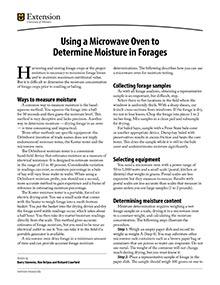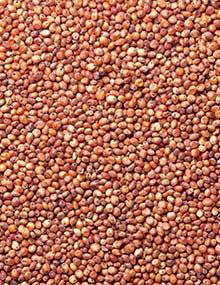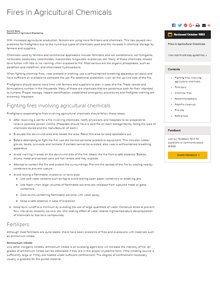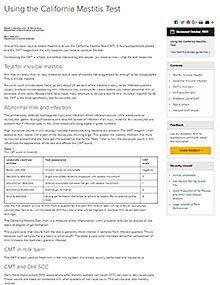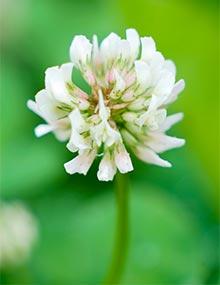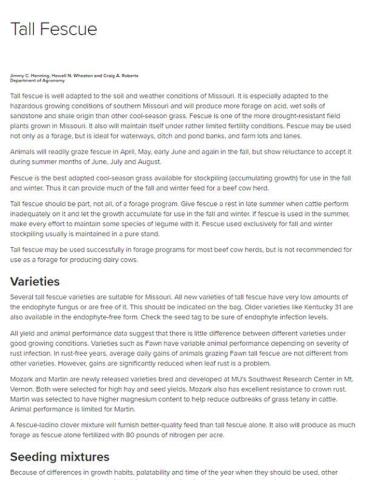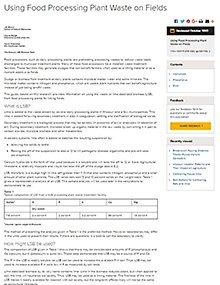How to Build a Compost Bin
Reviewed
Learn about five types of composting and how to build a composting bin. Worm and hemp composting, wire-mesh and snow-fence holding units, and wood and wire three-bin turning units are all covered in this University of Missouri Extension guide.
Home Slaughtering and Processing of Beef
Reviewed
A beef animal selected for slaughter should be healthy and in thrifty condition. Visit our site to learn about home slaughtering and processing of beef.
Using a Microwave Oven to Determine Moisture in Forages
Reviewed
Harvesting and storing forage crops at the proper moisture is necessary to minimize forage losses and to maintain maximum nutritional value. But it is difficult to determine the moisture concentration of forage crops prior to ensiling or baling.
Kitchens for Workers in Wheelchairs
Reviewed
Space for the wheelchair, plus space for turning the chair are the two important factors to consider when planning a new kitchen, remodeling a structure or adapting one being used.
The standard model wheelchair (measurements taken from American Standard specifications) falls within the following limits:
Household Hazardous Products
Reviewed
A household hazardous product is one whose use or disposal poses a threat to human health or the environment. Hazardous products should not be put in the trash, down the drain, into storm drains or burned unless you are instructed to do so by local waste authorities.
Low-Profile Bins for Grain Drying
Reviewed
Wheat Silage for Dairy Cattle
Reviewed
Corn Silage
Reviewed
Corn silage is a popular forage for ruminant animals because it is high in energy and digestibility. Visit our site to learn more about corn silage.
Simple Home Repairs: Wood Porch Flooring
Reviewed
Wood porches are beautiful, but sometimes boards or planks break or splinter, making them unsafe. Using the following instructions, they can be repaired.

Barley
Reviewed
Winter and spring barleys are available, but testing in Missouri indicates spring barley does poorly. Plus, six-row barleys have higher yield potential than two-row barleys in Missouri. Therefore, this publication covers only the six-row winter barleys.
The Bluegrasses
Reviewed
Fires in Agricultural Chemicals
Reviewed
With increased agricultural production, farmers are using more fertilizers and chemicals. This has caused new problems for firefighters due to the numerous types of chemicals used and the increase in chemical storage by farmers and suppliers.
Estimating Peak Rates of Runoff From Small Watersheds
Reviewed
Use the following equation to estimate the peak rates of runoff to be expected from watersheds smaller than 200 acres in Missouri:
Q = QT x L x I x T x S x V x C x P x F where
Q = Peak rate of runoff, cubic feet per second.
Using the California Mastitis Test
Reviewed
One of the best ways to detect mastitis is by using the California Mastitis Test. Visit our website today to learn more.
White, Ladino and Sweet Clover
Reviewed
White and ladino cloverWhite clover is a stoloniferous plant with a shallow root system. The primary stems of white clover usually die before the second year, and the life of the plant depends upon the stolons and their haphazard roots.

Portable Ladder Safety
Reviewed
Portable ladders are one of the handiest, simplest tools we use. Because of their effectiveness, ladders are used by many different people to perform many different tasks. Although ladders are very uncomplicated, planning and care are still required to use them safely.
Tall Fescue
Reviewed
Tall Fescue is one of the more drought-resistant field plants grown in Missouri. Visit our website today to learn more.

Drilled Soybeans in Missouri
Reviewed
Culverts and Flood Gates
Reviewed
The tables in this publication may be used to find culvert and flood gate size for bottomland drainage up to 640 acres.
A formula frequently used for calculating drainage flow rates of cultivated areas from one to one hundred square miles area in the Midwest is:
Using Food Processing Plant Waste on Fields
Reviewed
Waste, or lime stabilized biomass (LSB), from food processing plants can be used for liming fields. Learn what LSB is, how it can be used, and the soil benefits it provides in this University of Missouri Extension guide.
Renovating Grass Sods With Legumes
Reviewed
Many Missouri pastures have adequate grass stands, but they need legumes. If the soil is capable of growing them, legumes should be established in grass sods. Establishing clovers is cheaper than topdressing the grass with nitrogen.
Intermediate Trail Riding
Reviewed
More and more families are having fun trail riding. This activity is reasonably inexpensive, is non-competitive, and affords relaxation on nature's scenic trails.


